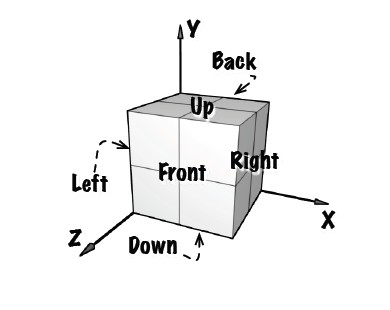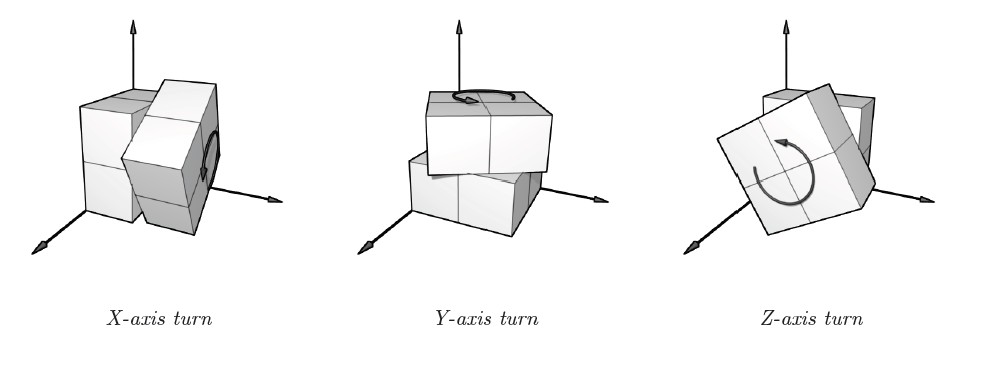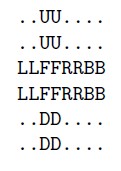
| Online Judge | Online Exercise | Online Teaching | Online Contests | Exercise Author |
|
F.A.Q Hand In Hand Online Acmers |
Best Coder beta VIP | STD Contests DIY | Web-DIY beta |
Rubik 2×2×2
Time Limit: 10000/5000 MS (Java/Others) Memory Limit: 327670/327670 K (Java/Others)Total Submission(s): 830 Accepted Submission(s): 335
Special Judge
Problem Description
Sonny is probably the only computer science Ph.D. student who cannot solve a Rubik's cube. One day, he came across a neat little 2×2×2 Rubik's cube, and thought, "Finally, here's a cube that's easy enough for me to do!" Nope, wrong! He got pwned, hardcore. How embarrassing.To ensure that this does not happen again, he decides to write a computer program to solve the cube.
Then he had this brilliant idea: Why not have the students at the programming contest do the work instead? So, given an initial con guration of the 2×2×2 Rubik's cube, your task for this problem is to write a program that solves it.
The mini-cube has 6 faces, each with 4 painted tiles on it. The faces are labeled Front (F), Back (B),Up (U), Down (D), Left (L), and Right (R), according to the diagram below. Each of the tiles on the faces can be colored Red (R), Green (G), Blue (B), Yellow (Y), Orange (O), or White (W), and there are exactly
4 instances of each color. The cube is considered solved when the colors of all tiles on each distinct face of the cube match.
cube, in the directions illustrated below. Note that the back-down-left corner is fixed with respect to all valid transforms.
Then he had this brilliant idea: Why not have the students at the programming contest do the work instead? So, given an initial con guration of the 2×2×2 Rubik's cube, your task for this problem is to write a program that solves it.
The mini-cube has 6 faces, each with 4 painted tiles on it. The faces are labeled Front (F), Back (B),Up (U), Down (D), Left (L), and Right (R), according to the diagram below. Each of the tiles on the faces can be colored Red (R), Green (G), Blue (B), Yellow (Y), Orange (O), or White (W), and there are exactly
4 instances of each color. The cube is considered solved when the colors of all tiles on each distinct face of the cube match.

cube, in the directions illustrated below. Note that the back-down-left corner is fixed with respect to all valid transforms.

Input
You will be given maps of an "unwrapped" cubes showing colors on each of the faces, in the following format:

Output
For each cube, output on a single line a sequence of moves that will solve the cube. Output `X' for a turn about the X-axis, `Y' for a turn about the Y-axis, and `Z' for a turn about the Z-axis. Any sequence of moves (that is reasonably
finite) which solves the given confi
guration will do. (After all, Sonny does need to execute your commands to verify that your program works!) A blank line will suffice for an input cube that is already solved.
Sample Input
..WO.... ..WO.... BBOYGGWR BBOYGGWR ..YR.... ..YR.... ..GY.... ..BY.... ROYWRRBB GWOWRBOW ..YG.... ..OG.... ........ ........ ........ ........ ........ ........
Sample Output
X YZXXXZYZXYXYZZYZZYZXYY
Source
| Home | Top |
Hangzhou Dianzi University Online Judge 3.0 Copyright © 2005-2025 HDU ACM Team. All Rights Reserved. Designer & Developer : Wang Rongtao LinLe GaoJie GanLu Total 0.001000(s) query 1, Server time : 2025-04-06 03:15:11, Gzip enabled |
Administration |